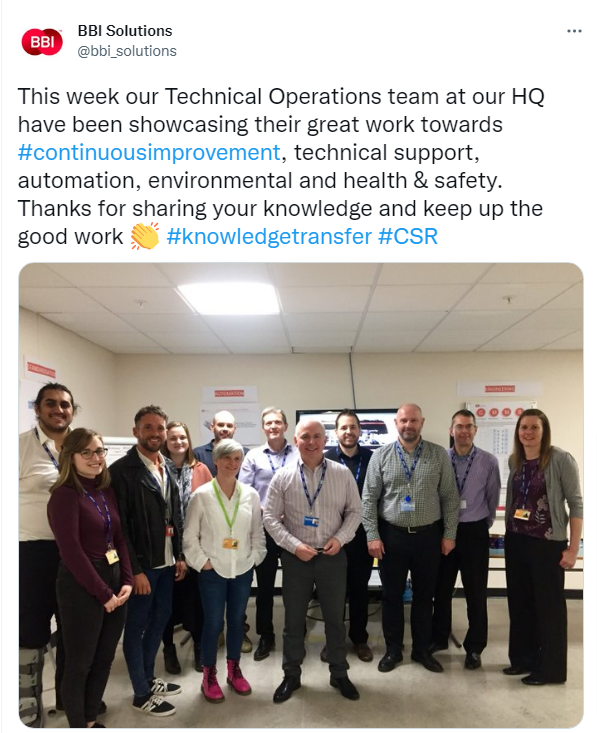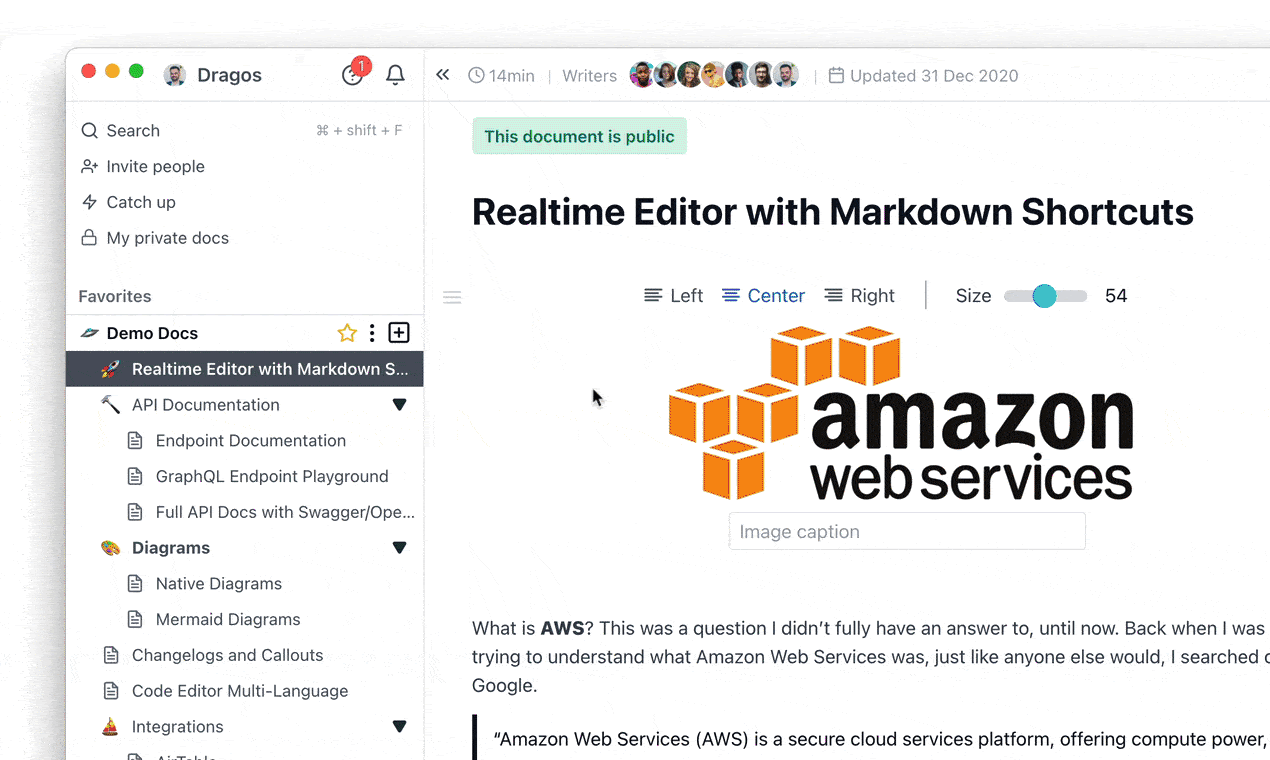Building a workplace where knowledge sharing is a part of the culture can be challenging, but it’s worth the effort.
Encouraging employees to share what they know will spark team spirit and communication and enable everyone to increase the breadth of their knowledge. A company that has skilled employees like this can only prosper.
That’s why we gathered seven practical ways to help you build a strong knowledge-sharing culture. Let’s see how you can use them in your company!
Make It a Priority
According to a Deloitte survey, 29% of respondents think it is difficult or nearly impossible to extract knowledge from knowledge base repositories, while another 19% have shown similar frustration about obtaining knowledge from colleagues.
The survey also made an important discovery–when companies prioritize knowledge management, employees find it easier to acquire information. In those circumstances, about 80% of them say that they can access the information they need from the repository and colleagues alike.

That means that if companies want to create a knowledge-sharing environment, they should focus on making it a cornerstone of their culture.
But how do we create a culture that prioritizes knowledge-sharing when employees are already too busy juggling responsibilities, tasks, and roles in their daily workflow?
Steve Trautman believes that the answer lies in approaching knowledge sharing as any other work-related task. Companies should specify how many hours per week or month employees should spend sharing their insights with others.
"I've found that when managers provide experts the clarity of a set target of time for this work (in hours or percentage), knowledge transfer happens quicker, more predictably, and with greater accountability."
Therefore, one of the ways to encourage a consistent flow of information among employees is to make it one of their assignments.
Another way comes from Toyota, a company that mastered sharing knowledge by putting it at the top of its priority list.
The knowledge-sharing method they employ, known as Yokoten, is all about capturing and transferring best practices horizontally, peer-to-peer across the entire company.
Or, as Toyota defines it in its tweet, Yokoten is "horizontal deployment" or "sideways expansion."

The Yokoten concept aims to share the knowledge to help others achieve Kaizen, or improvements to their current standards and practices.
Rather than wait for the information to become a part of the company's repository, employees are encouraged to go and see the best practices implemented by other teams for themselves, then return and incorporate them into their work.

And the role of managers is to inform employees about the good Kaizen examples so they can go and study them on the spot, gain knowledge and improve their work.
In other words, Yokoten is finished when the Kaizen is confirmed as a standard and shared with others.
Although that method may be challenging for many companies, because they often lack the time and personnel to conduct such an extensive transfer of knowledge, it's a clear indicator of how if you make transferring knowledge your priority, that can significantly contribute to the success of a company.
Provide Incentives and Reward Knowledge Sharing Efforts
Finding and obtaining knowledge from their colleagues can be a massive challenge for your employees. It doesn’t only cause stress for your workers, but also puts a drain on your resources.
In fact, research shows that businesses lose approximately $47 million every year due to poor and ineffective knowledge sharing.

These high numbers don’t necessarily mean that the employees hoard knowledge because they look at other colleagues as competition.
It can be a sign of the absence of a collaborative culture or simply indicate that the employees don’t think educating others is on top of their list of duties.
So how can you encourage employees to break down information silos and jump into knowledge-sharing adventures?
You have to offer them incentives.
It’s common knowledge that a small token of appreciation can go a long way.
If you acknowledge how much you appreciate your employees’ knowledge-sharing efforts, chances are they will feel valued and be ready to go the extra mile next time.
Praising someone for their work (and that includes knowledge-sharing efforts) can be one of the most powerful motivators, considering that 60% of employees are more motivated by recognition than money.

This recognition can come in more forms than just a simple pat on the back. For example, why not use your social media channels to commend your team on their willingness to share knowledge and help others.

Positive reinforcement can go a long way, but it’s even more powerful when combined with rewards.
For example, many companies incentivize their top performers with bonuses, company swag, or even free parking space, as in the case of the shoe retailer Zappos.

And some companies establish a system in which employees receive accolades for their knowledge-sharing efforts.
For example, in the engineering and consulting company, Arup, knowledge sharing is a key factor for entering the Fellows Program, representing the highest level of professional achievement.
The Arup Fellows honorary title is designated only to a selected few who have shown great expertise and initiative in passing on their knowledge.

In addition to the title, the employees are given an honorary place on the corporate website among other deserving colleagues. What a great way to celebrate employee engagement!
Companies should never stop finding new ways to incentivize employees to share what they know, as it could be a game-changer in creating an engaging and collaborative workforce.
Remove Communication Barriers
Every company wants its business to run smoothly and employees to perform at the highest level. But that is only possible if the communication among team members is effective, open, friendly, and straightforward.
Unfortunately, the study conducted by Fierce shows that this often isn’t the case, as 86% of employees and executives cite the lack of effective collaboration and communication as the main causes for workplace failures.

When communication is not as strong as it should be, employees can feel detached, isolated, and left to their own devices, which eventually leads to discouragement and dissatisfaction, resulting in mistakes that could slow down current operations.
To enhance the communication between colleagues, many companies today opt for enterprise social network software solutions, such as, for example, Slack.

Slack has done wonders in helping businesses improve team spirit, connect team members, encourage collaboration, and foster knowledge sharing.
And a myriad of excellent reviews from users all across the internet, like the one in the picture below, vouch for its quality.

To a great extent, Slack owes its popularity to the fact that it enables quick back-and-forth conversations among colleagues, thus reducing the reliance on emails that sometimes slow down the conversations.
It also allows colleagues to exchange information and documents but also share their little wins, failures, and success stories, which is great for building team spirit and setting the stage for effective knowledge sharing.

Another way companies can boost the culture of knowledge sharing is by encouraging employees to participate in forum discussions.
Many intranet software solutions nowadays feature integrated forums, as in the example of Interact, pictured below. They are great for solving problems, exchanging ideas, and sharing expertise.

People like forums because they give them find first-hand solutions obtained directly from the person who resolved the problem.
They can further ask questions, communicate with other coworkers, and feel they are all in the same boat with the problems they face, meaning they will instantly feel like a part of the team.
Answers from both Slack and forums can later be incorporated into the Q&A sections in the knowledge repository.
By breaking down the communication barriers, companies improve the culture and build their knowledge base with quality, practice-proven solutions. And that is a win-win situation for every business.
Provide Space for Employees to Share All Types of Information
If you want to further boost knowledge sharing among colleagues, it would be a good idea to revamp the office interiors.
Employees should have the ability to work together, brainstorm ideas, and exchange inputs, so every company should establish a space that supports this kind of activity.
But don’t worry, remodeling an office for that purpose doesn’t have to be extensive.
It can be as simple as designating a meeting room where employees can work together on projects, or installing coffee stations outside the kitchen to spark spontaneous conversations, like in the example from UPshow, the digital signage software provider, below.

In another example, all it took for Transfix, a freight marketplace that connects shippers to a network of carriers, to encourage knowledge-sharing was to create a collaborative space called a “parking lot”.

This is an area on the floor full of natural light and comfortable furniture where colleagues hang out and exchange ideas. Or in the words of AJ Hodge, Workplace Manager:
“The parking lot offers an informal place for Transfixers to work, bounce ideas off of each other or just kick back and converse with one another."
If your company works remotely, there are also possibilities to enhance team spirit and encourage collaboration. One of them comes from the Microsoft Teams feature called Together Mode.
As you can see in the YouTube video from Collaboration Coach, Together Mode simulates the way people work in the offices by enabling them to virtually hang out in coffee shops or conduct meetings in conference rooms and auditoriums.

Remote workers can almost feel like they are sitting in the same room thanks to the AI that scales and centers them in their virtual seats no matter how far away they are from the camera.
By connecting with each other in simulated backgrounds that resemble office spaces, employees can get a sense of connection that sparks the sharing of ideas, knowledge, and insights.
An open and comfortable space will give employees a sense of psychological safety. A professor at Harvard Business School, Amy Edmondson, defines it as "a climate in which people are comfortable being (and expressing) themselves."
And that is something worth considering if you want to build a strong knowledge-sharing culture in your company.
Have Experts Share Their Knowledge
In every company, there are subject matter experts who possess knowledge critical for the success of the organization and its projects.
But what happens to that knowledge when they retire or decide to pursue careers elsewhere?
In most cases, it gets lost. And the employees that are left behind have to put in the time and effort to find best practices, which they could have easily learned from the experts if only someone remembered to gather their knowledge.
So it's better to think ahead and motivate the top performers to share what they know, mainly because the turnover rate is still at its peak, and a staggering 44% of employees are actively looking for a new job.

One of the examples of how you keep the experts' knowledge in the company comes from the Leonard-Barton Group and their technique called "knowledge cascades".
Or, in the words of Dorothy Leonard, chief adviser at Leonard-Barton Group:
“You’re taking the knowledge and know-how of this expert and you’re not just passing it to one or two people—you’re cascading that down through the organization.”
In its simplest form, this means that experts, whom she calls “deep smarts,” share their knowledge with a small group of people, who are then responsible for mentoring and teaching others.

As Ms. Leonard explains in the video, this sort of "pay it forward" model can effectively motivate "deep smarts" to share their expertise with juniors and other colleagues.
While cascading is undoubtedly one of the best ways to get your top performers to teach others, recording an internal podcast is probably a better way to preserve that knowledge and make it engaging.
So why not use the power of simple voice recording, and ask your experts questions about their work in an interview that other employees can later listen to?
For some time now, companies like Netflix, Shopify, and Spotify have been regularly making podcasts and experiencing great results.

For example, Shopify’s podcast host, Simon Hørup Eskildsen, testifies:
“Almost 3 years later after I started my first podcast, we have about 20 internal podcasts: the CEO’s own podcast, recordings of our weekly town hall, onboarding content, life stories of employees, training, and many others.”
Remember, it doesn’t matter which method you choose as long as you capture the knowledge and expertise of your most experienced workers and save it for the future generations of your employees.
Formalize a Process
Formalizing a process is one of the key aspects of every knowledge-sharing culture, as this relatively simple activity can prevent disasters in the future.
Building a formal process is all about establishing knowledge-sharing routines and providing the structure that makes responsibilities and roles as clear as possible.

That way, you’re ensuring your knowledge base is current, correct, and in a permanent state of growth. So what steps can you take to formalize knowledge sharing?
For example, there are certain questions that need to be answered to even start formalizing the process.
- How often should articles be published in the knowledge base?
- How often should the knowledge base be updated?
- Who will create content when the new product or service is launched?
Responsibilities and procedures should be documented in detail, made clear to the staff, and uploaded to the knowledge base repository so that everyone at every time knows who is in charge and what the protocols are.
You can formalize other parts of the knowledge-sharing process as well. For example, you can put employees in charge of taking care of the content in the knowledge repository, and assign them the roles of editors or administrators, same as you would do for your Wordpress users.

That way, you can track who added, edited, or published content and gain full control of all aspects of the knowledge-sharing process.
When everyone in the company knows what their responsibilities are, knowledge management becomes much less challenging.
Create a Dedicated Knowledge Sharing Platform
One of the prerequisites that must be met in order for knowledge sharing to happen at all is to have a dedicated platform that is intuitive, easy to use, and accessible.
If employees can't find the information they need whenever they need it, they won't consider the knowledge base a valuable source of information. As a result, they won't be motivated to participate in knowledge-sharing activities as they will label them useless.
Susan Feldman, the co-founder of the Cognitive Computing Consortium, agrees with this statement when she declares that the essential requirement of an effective knowledge base is easy access to information.
“The first thing knowledge workers need is easy access to information through a single interface. One search should get them all the information in a company, no matter where it resides or what format it is in.”
In other words, employees need to directly find the information they need instead of going through many different articles to find solutions.
For example, our own documentation software, Archbee, has a powerful search option that enables employees to find the desired information in a matter of seconds.

When they can find the information they need quickly, employees appreciate the value of having an internal knowledge base in place. As a result, they are motivated to invest time and effort in something so useful that it benefits not only them but other team members alike.
Another significant aspect that has to be met for successful knowledge sharing is the platform's user-friendliness.
Employees should be able to style their articles with ease and not see the software as a time-consuming obstacle preventing them from quickly and easily publishing their content.
Archbee has pretty remarkable features in this area also.

With Archbee’s 30 custom blocks and counting, employees will be able to style and publish their articles in a breeze, without technicalities standing in their way.
Knowledge sharing doesn’t have to be a tedious, time-consuming activity. With the right documentation software in place, employees will be eager to share their knowledge with others and create helpful articles.
Conclusion
Incorporating knowledge sharing is essential for today’s companies. When employees have access to the company’s know-how and other crucial knowledge, that will change the way they work and make them a more productive part of the workforce.
In this article, we collected seven practical suggestions for promoting knowledge sharing in your organization.
From rewarding employees and adopting the right tools to boosting communication and formalizing dedicated processes, these tips and tricks, if implemented well, will help you create a winning knowledge-sharing culture in no time.



.png)







